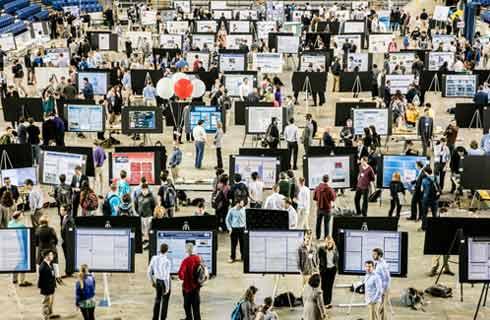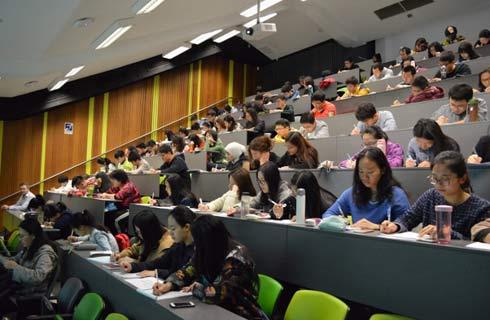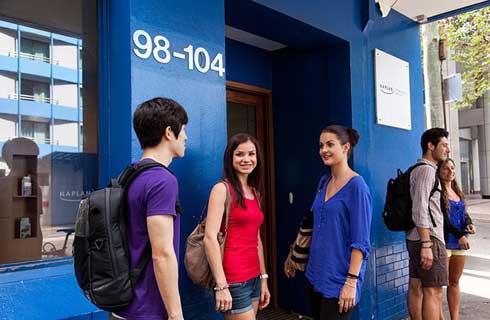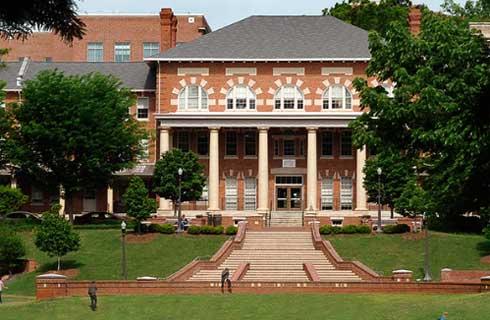国际学生入学条件
Undergraduate Preparation:
Applicants are expected to have a degree in physics or a related discipline from an accredited institution.
Standardized Tests:
Scores from the GRE General or Physics subject exam are not required to apply but will be considered if submitted. For example, Physics GRE scores can be useful in evaluating applicants with a non-standard path to graduate study in physics. All applications will receive full consideration whether GRE scores are submitted or not.
Transcripts
Applicants must upload unofficial transcripts of their entire post-secondary academic record to the online application, including all undergraduate- and graduate-level coursework. Applicants are expected to have achieved a minimum GPA of 3.0 in their undergraduate programs.
Statement of Purpose
The statement of purpose should indicate your reasons for applying to the proposed program at the University of Virginia and describe your preparation for this field of study, research interests, future career plans, and intellectual or life experiences in order to aid the admissions committee in evaluating your aptitude and motivation for graduate study. Your commitment to a selected field of study is presumed in the receipt of your application; instead, please discuss specific issues in the field that engage you. Please limit your submission to between 500 and 1,000 words.
The minimum internet-based (iBT) TOEFL score requirement is 90 (including sectional minimums of 22 in speaking, 22 in writing, 23 in reading and 23 in listening). The minimum paper-based TOEFL score requirement is 600. Applicants may submit scores from the International English Language Testing System (IELTS) as an alternative to the TOEFL exam. The minimum IELTS score requirement is 7.0 in each section.
展开
IDP—雅思考试联合主办方

雅思考试总分
7.0
- 雅思总分:7
- 托福网考总分:90
- 托福笔试总分:600
- 其他语言考试:NA
CRICOS代码:
申请截止日期: 请与IDP联系 以获取详细信息。
课程简介
The Physics Department and the Institute of Nuclear and Particle Physics support some of the leading research groups in this basic area of physics. Faculty members are the spokesmen for experiments that test fundamental aspects of nucleon and nuclear structure. These include experiments at the Stanford Linear Accelerator Center (SLAC) on the origin of the nucleon's spin, the details of the charge distribution of the neutron at Thomas Jefferson National Accelerator Facility (TJNAF), and a precision measurement of pion beta decay at the Paul Scherrer Institute (PSI). At SLAC the inelastic scattering of polarized electrons from polarized nucleon targets allows a detailed investigation of the spin structures of the nucleon. These measurements provide the best determination of how the quarks and gluons contribute to the fundamental spin of the nucleon. There is active research and development of high-power polarized targets, using high-field superconducting magnets, low-temperature refrigerators, and high-frequency microwaves. Electron paramagnetic resonance characterization of these targets is proceeding together with theoretical and computational modeling of local hyperfine interactions that contribute to dynamic nuclear polarization. At TJNAF an extensive series of experiments has been approved, including a measurement of the electric charge form factor of the neutron. The experimental measurements are complemented by strong theoretical support in the Department. This theoretical effort involves work in relativistic chiral quark models, spontaneous chiral symmetry breaking, quantum theories based on light-front formalism, and perturbative quantum chromodynamics (QCD) phenomenology, including studies of power corrections to the nucleon/nuclear structure functions, quark-hadron duality and low Bjorken x physics. Students admitted to the Ph.D. program are supported financially either by teaching and research assistantships or fellowships. Research leading to the dissertation can be carried out not only within the Department of Physics, but, with appropriate arrangements, either partly or entirely at other locations. Recent dissertation research has been carried out at various national laboratories across the globe, such as the NIST Center for Neutron Research, Jefferson Lab, Fermilab, CERN, and the Paul Scherrer Institute.
展开







 预科
预科 奖学金
奖学金 实习机会
实习机会 在校学习
在校学习 跨境学习
跨境学习 校园授课-线上开始
校园授课-线上开始 在线/远程学习
在线/远程学习














 爱荷华州立大学
爱荷华州立大学

 伍斯特理工学院
伍斯特理工学院

 乔治华盛顿大学
乔治华盛顿大学

 佐治亚州立大学
佐治亚州立大学

 科罗拉多大学博尔德分校
科罗拉多大学博尔德分校

 圣母大学
圣母大学









